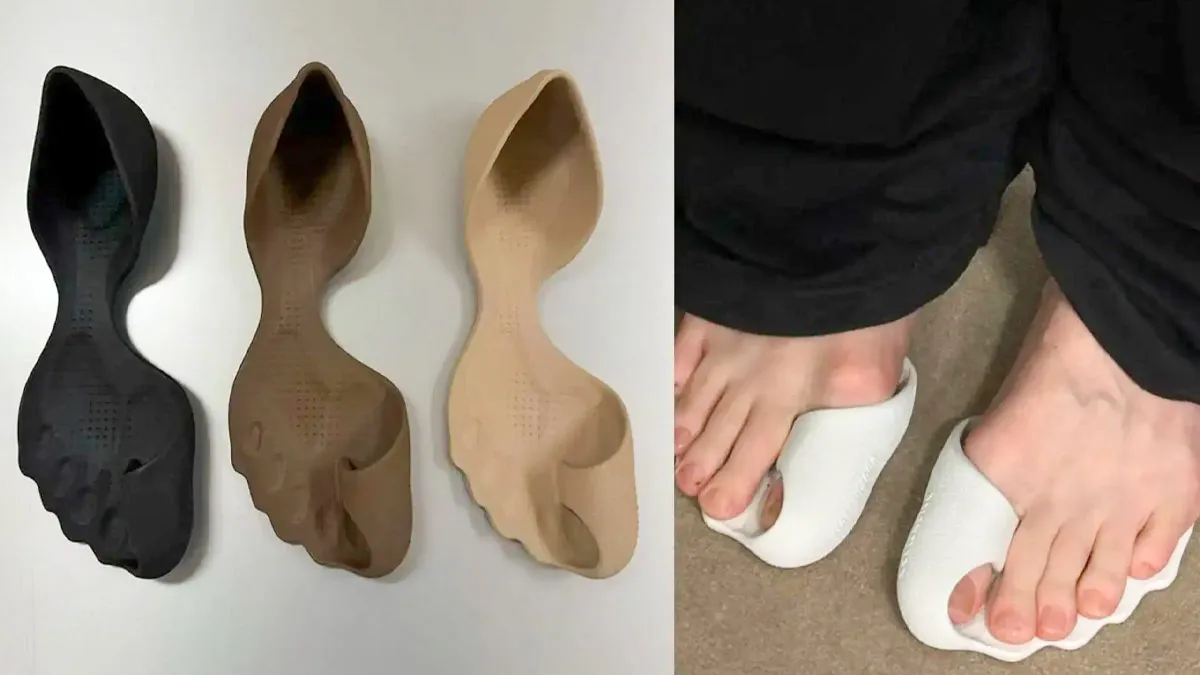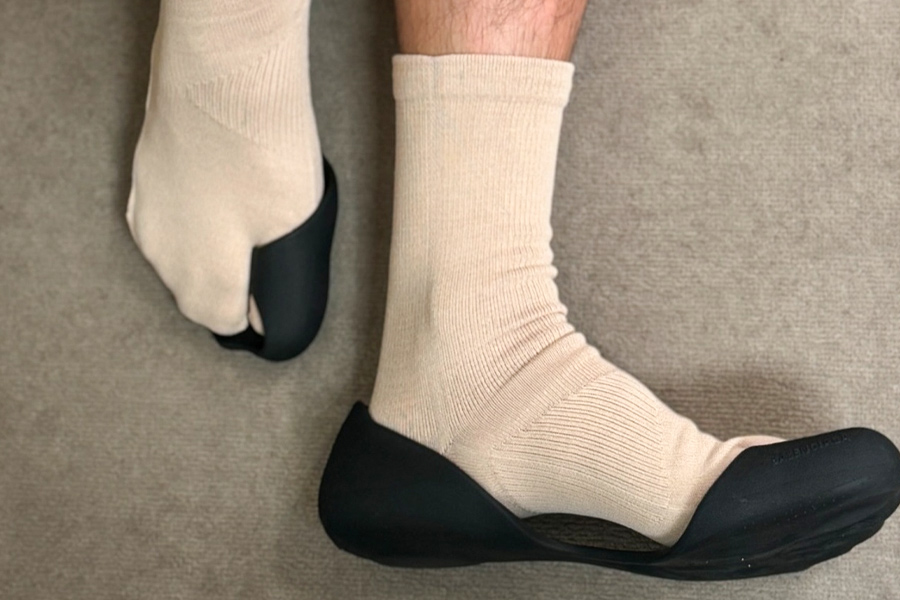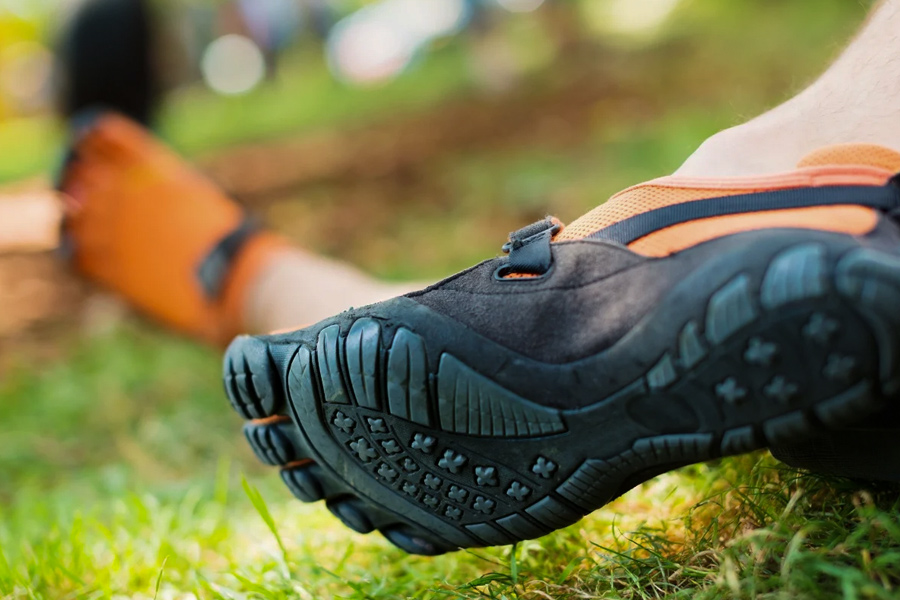
Balenciaga, known for its controversial and avant-garde fashion choices, has once again sparked a frenzy with its latest creation: the "Zero" shoe. As part of their Fall 2025 collection, these barefoot-inspired shoes are priced at $450 and are crafted from EVA foam. The design leaves most of the foot exposed, with the shoe held together by a rounded heel and a big toe cap. Available in muted tones like black, white, tan, and brown, the Zero shoe defies conventional aesthetics and functionality. The question on everyone’s mind: Is Balenciaga breaking boundaries, or is it simply pulling another fashion stunt?
Table of Content:-
Social media is abuzz with mixed reactions. For some, this minimalist design embodies innovation and artistic bravery. For others, it’s impractical, uncomfortable, and an expensive gamble for everyday wear. But beyond the design controversy, the concept of barefoot shoes has stirred curiosity about potential health benefits. Could these unconventional shoes be beneficial for foot health, or are they a recipe for discomfort and injury?
Bro walking around with a toe cap
— A&B Plus Kicks (@A_B_PlusKicks) December 4, 2024
Barefoot Shoes: A Rising Health Trend
Barefoot shoes are designed to mimic walking or running without footwear, encouraging the feet to move naturally. Unlike traditional shoes, which often have restrictive shapes and cushioned soles, barefoot shoes prioritize minimalism and flexibility. Advocates of barefoot footwear argue that it offers numerous health benefits, particularly for foot strength, balance, and alignment. Let’s explore whether Balenciaga's Zero shoes, despite their divisive design, align with these health principles.
Health Benefits of Barefoot-Inspired Footwear
Strengthening Foot Muscles
Traditional shoes often force feet into unnatural positions, which can weaken the muscles over time. Barefoot shoes, like Balenciaga’s Zero, allow the feet to move more freely and naturally. This can lead to stronger foot muscles, improved balance, and better stability. When feet are allowed to spread and flex naturally, the body can distribute weight more evenly, reducing strain on other joints.
Improving Ankle and Knee Stability
Wearing barefoot shoes can enhance ankle stability. Stronger ankles provide better support and reduce the risk of sprains or twists. Many knee and hip injuries are related to poor foot alignment, which barefoot shoes aim to correct. By encouraging natural foot positioning, these shoes can promote better posture and decrease the likelihood of joint injuries.

Reducing Joint Impact
Heel striking, which occurs frequently with traditional running shoes, places significant stress on the joints. Barefoot shoes encourage midfoot or forefoot striking, which reduces the impact on the knees, hips, and lower back. This can be particularly beneficial for runners or those who spend long hours on their feet. However, caution is advised when walking on hard surfaces like concrete, as minimal cushioning may lead to discomfort or injury.
Enhancing Toe Strength
The minimalist design of barefoot shoes promotes toe engagement and mobility. Stronger toes improve overall foot control and balance. Since toes play a critical role in stabilizing the body, better toe strength can lead to improved posture and gait. This may help prevent conditions like bunions and hammertoes, which are often caused by restrictive footwear.
Improving Proprioception
Proprioception is the body’s ability to sense its position and movement. Barefoot shoes allow feet to experience more ground feedback, enhancing this sensory connection. Improved proprioception aids in better balance, coordination, and spatial awareness. This can be particularly useful for athletes or individuals recovering from injuries.
Reducing Back Pain
Heeled shoes can cause muscle imbalances and spinal misalignment, contributing to chronic back pain. Barefoot shoes, by keeping the feet flat and aligned, promote a more natural posture. This can alleviate tension in the lower back, hips, and pelvis, leading to long-term relief from pain.

Potential Drawbacks to Consider
While barefoot shoes offer notable benefits, they aren't suitable for everyone. People with flat feet, plantar fasciitis, or other specific foot conditions may find these shoes uncomfortable or even harmful without proper guidance. Additionally, transitioning from traditional footwear to barefoot shoes requires time and gradual adjustment to avoid injury.
Balenciaga’s Zero shoe, with its minimalist design, may lack sufficient support for daily wear, especially for those unaccustomed to barefoot-style footwear. Critics argue that its unusual structure might pose more problems than solutions for practical use.
Fashion or Function: Is the Zero Shoe Worth It?
Balenciaga’s Zero shoes embody the spirit of high fashion — daring, experimental, and divisive. For fans of the brand, the design may be worth the hefty price tag as a statement piece. From a health perspective, the Zero shoe reflects some principles of barefoot footwear, which could offer benefits for foot strength and alignment. However, practicality remains questionable.
Ultimately, the Zero shoe challenges the boundaries between fashion, art, and function. Whether you view it as an innovative health tool or a bizarre fashion flex, the debate continues. One thing is certain: Balenciaga knows how to keep us talking.
Also watch this video
How we keep this article up to date:
We work with experts and keep a close eye on the latest in health and wellness. Whenever there is a new research or helpful information, we update our articles with accurate and useful advice.
Current Version